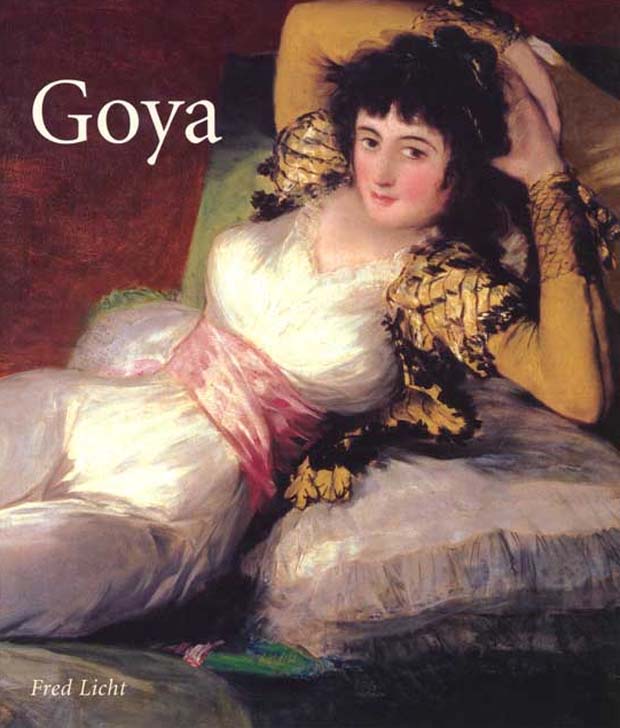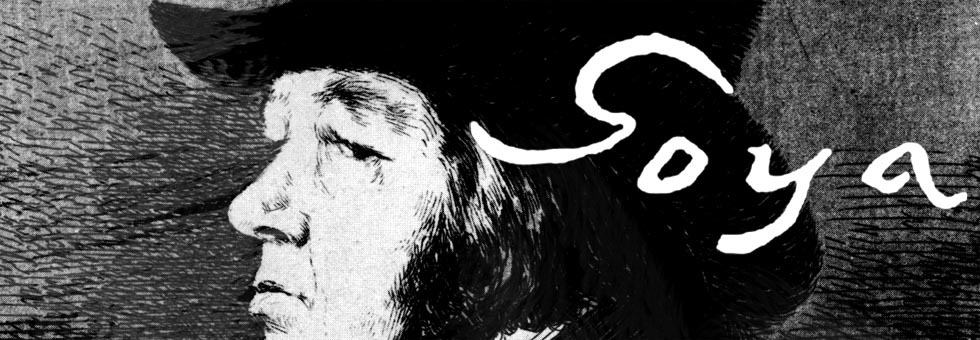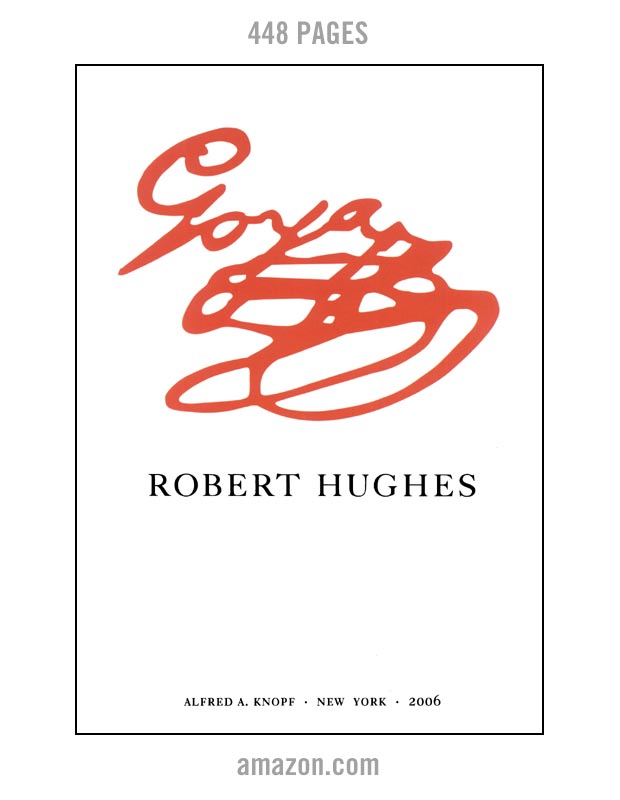Goya by Fred Licht
 Goya
Goya
By Fred Licht
Published by Abbeville Press**
ISBN 0789207273
First Edition, 2001
360 pages
Printed in Spain
The presentation in Fred Licht's Goya of what the artwork means and where it fits in art history is strict and precise. The approach is in a tone that would agree with the ear (or eye) of the art modernist. Often the analysis is couched in existential ideas, and in a modernist chronology showing Goya as a proto-Modernist leading up to the contemporary era of pure modernism. There seems to be some circular reasoning in this, and also the suggestion that Goya's accomplishment is reflected primarily in a different era of art (i.e., the modernist era.)
Licht takes his subject with a great deal of gravitas, and there are moments when this art history book crosses over into art theology, with Goya as prophet and Licht as priest. He is enthusiastic about Goya and the paintings, and that he has a great deal of affection for what Goya accomplished is evident in page after page, and deep, heartfelt meanings are found by Licht at every turn.
"...monsters are merely irregular manifestations that scandalize our sense of the fitting and the natural. They exist only, as the original frontispiece of the Caprichos informs us, when reason sleeps. It is only the slothfulness of our minds that allows monsters to exist.
In the Black Paintings, the monsters are not intruders but the rightful and eternal inhabitants of the external as well as the internal universe of men. Waking or sleeping, reason encounters what is unreasonable or antireasonable. It is impossible to say whether or not monsters we face while asleep are fiercer, more real, and more pervasive than the monsters that attack us when we wake from the nightmares of our oppressed souls to the equally ferocious nightmare of what by convention is called the real world." (Page 215)
The obvious rejoinder I felt from reading some of the analysis provided by Licht was simply what if Goya was a habitual prankster? There's an argument to be made that Goya hardly took everything as seriously as the art historians do. This is not to say Goya was not struck to the heart when he was making the Disasters of War or any number of other images documenting the horrors of his time. But there is a kind of over-the-top levity in the visual assault of the Black Paintings. Was Goya but a brooding, dark figure decorating his home with these images? Isn't there some gallow humor in (at least) his dining hall scene in which the two bony eating companions on the wall are pointing across at something or someone (Goya?)
But Licht handles Goya's artwork with a heavier and darker feel. For example, he finds echoes, if not a possible direct correlation between the age-old anti-Jewish blood libel and the Saturn image from the Black Paintings, and yet in the next paragraph says "...Goya's version of the Saturn legend is eccentric beyond the point of recognition." (Page 221) I would not say that this is a case of having your cake and eating it, too, because Licht simply has more ideas per page than many Goya books have per chapter. He seems to have thought about these images for a long time, and to have carefully placed them in a catalogue of personal meaning.
Mr. Licht's book is a gorgeous, large volume with excellent four-color reproductions (it measures approximately 11" x 13" inches ). I have not seen better offset reproduction of Goya's paintings in any other book I possess. However, there are a number of production gaffs in the books first chapter, none of which alter the quality of the image reproductions, but make for annoying reading on several text pages. More serious is the condition of reproduction on a number of the black and white Goya etchings – these images have been digitally "enhanced" through (I suspect) Adobe Photoshop unsharp masking, and the result is misleading (as an example, see page 135 – the linework is broken up badly, and viewing the image through a magnifying loupè shows that the source image was apparently a halftone book page). I would not lay these issues to rest with Mr. Licht, though, but with the Abbeville production team that triumphed (as I mentioned, this book has incredible reproduction qualities) but also failed in a few places. A remarkable book and not of the usual variety of "art history."
Buy the book off the Abbeville website here.
Goya by Fred Licht - Amazon
(We don't get anything if you order from this page.
Abbeville Press sent us a copy of the book to
review and we very much appreciate it.)
(Below: From the dustjacket of Fred Licht's book Goya)

AMAZON
Goya The Terrible Sublime - Graphic Novel - (Spanish Edition) - Amazon
"From this headlong seizure of life we should not expect a calm and refined art, nor a reflective one. Yet Goya was more than a Nietzschean egoist riding roughshod over the world to assert his supermanhood. He was receptive to all shades of feeling, and it was his extreme sensitivity as well as his muscular temerity that actuated his assaults on the outrageous society of Spain." From Thomas Craven's essay on Goya from MEN OF ART (1931).
"...Loneliness has its limits, for Goya was not a prophet but a painter. If he had not been a painter his attitude to life would have found expression only in preaching or suicide." From Andre Malroux's essay in SATURN: AN ESSAY ON GOYA (1957).
"Goya is always a great artist, often a frightening one...light and shade play upon atrocious horrors." From Charles Baudelaire's essay on Goya from CURIOSITES ESTRANGERS (1842).
"[An] extraordinary mingling of hatred and compassion, despair and sardonic humour, realism and fantasy." From the foreword by Aldous Huxley to THE COMPLETE ETCHINGS OF GOYA (1962).
"His analysis in paint, chalk and ink of mass disaster and human frailty pointed to someone obsessed with the chaos of existence..." From the book on Goya by Sarah Symmons (1998).
"I cannot forgive you for admiring Goya...I find nothing in the least pleasing about his paintings or his etchings..." From a letter to (spanish) Duchess Colonna from the French writer Prosper Merimee (1869).
GOYA : Los Caprichos - Dover Edition - Amazon




